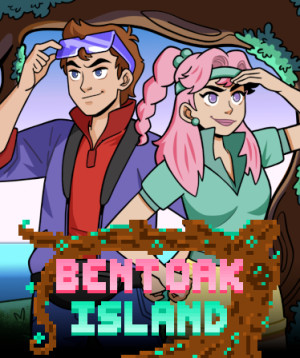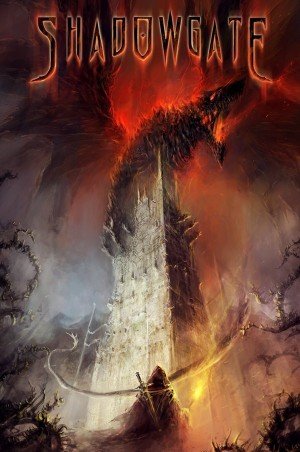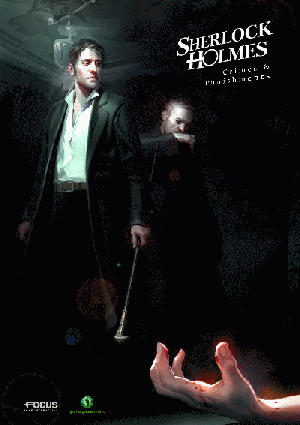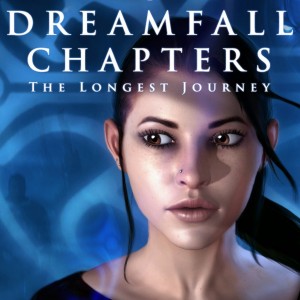Review for Lumino City

At the risk of stating the obvious, Lumino City is a visual treat. Similar in style to its prologue-like predecessor Lume, but much grander in execution, this full-fledged sequel is a hand-crafted point-and-click adventure filmed using real material props, Mouse Trap-esque set pieces, and animated cartoon characters superimposed over top. It’s a striking effect that must be seen in motion to truly appreciate, consistently delivering intricate and inventive spectacles from the moment the game begins. Better yet, while this gorgeous aesthetic is worthy of admiration in itself, the substance behind the style is equally strong, revealing a remarkably charming, puzzle-filled adventure.
The game begins with a cute and simple storybook premise consistent with the paper cut-out look. Cute, clip art-styled Lumi, who has hands and feet but no arms or legs, is making tea when suddenly she hears a mysterious crash and discovers that her Grandad has disappeared. Lumi quickly flees her Grandad’s home and rushes to the nearby Lumino City, an elaborate, intertwining town nestled inside an old wooden boat wheel suspended high in the sky. Lumi’s quest is to travel across this astoundingly colorful world to find her Grandad, all the while trying to solve troubling power outages plaguing the city. It's a very superficial premise that makes the story feel secondary, but the game’s primary focus more than makes up for its narrative simplicity.
In fact, less is generally more in this adventure, including the minimalist interface. Everything works in one-click fashion, much in the vein of Samorost. Click a destination in the world and Lumi will run to it. See a button, click it, and Lumi will press it. Click the satchel Lumi is carrying and her inventory appears in a bubble above her head, where you can drag and drop items onto the environment for easy application. A potential downside to this simplicity is that hotspots are rarely indicated, the exception being the occasional swinging and climbing sequence where click timing is imperative, during which hotpots are highlighted with tiny bubbles. Even scene-shifting exits can be difficult to discern at times. But apart from a bit of hotspot hunting, the ease of this streamlined interface makes Lumino City an intuitive point-and-clicker, wisely leaving the focus on the immersive visual presentation rather than the mechanics needed to explore it.
Lumino City follows a very linear structure: in each self-contained scene, consisting of two or three distinct screens at most, you must alter the current environment so you can successfully navigate Lumi all the way through and into to the next one. However, thanks to the city’s beautifully interconnected structural design, these scenes flow together beautifully, at least in part due to the seamless full motion video transitions that connect them. The camera will pan and swoop around the current section of the model city, changing perspectives as Lumi arrives at her new destination. Depth of field is an important factor as well, with crisp foregrounds and hazy backgrounds switching appropriately as Lumi moves through them.
The effect of all this is to make the game feel like a cohesive, brilliantly designed toy world with a wide range of wonders to behold, including a captain’s ship trapped at the top of the wheel, a garden of elevated glass fish bowls, and a house that rotates on its axis, revealing new rooms and pathways depending on its rotation. But this is only possible because the entire world was physically hand-crafted as a ten-foot high model built with paper and wood cut-outs, miniature lightbulbs, metal, painted plastics, and many other real-world materials. It's simply a delight to explore, and the animated characters blend in naturally. Seeing Lumi climb across a rotating watermill or jump across the rooftops of houses protruding from a cliffside in rhythmic fashion is a joy of both animation and set design working together.
Fortunately, along with this creative visual display, Lumino City is accompanied by equally rewarding puzzles that drive the adventure. In fact, solving puzzles is what you’ll spend most of your time doing, since the sets themselves don’t take too long to investigate. Almost every puzzle is fun, continually engaging and often inventive, yet they become more original and satisfying the further you advance. The obstacles are not extraordinarily difficult, but the lack of any tangible in-game feedback in solving them makes them reasonably challenging.
If you need some help, a “handy manual” of hundreds of pages is available at all times in your inventory. In the table of contents of this humongous book, you can solve a clue-based mathematical problem involving the number of objects related to the problem at hand. The answer will provide you with the proper page number to turn to, which in turn reveals some crafty hints to the current problem. I didn’t rely on this at all through the adventure, except once at the very end where I encountered a solution that would have been pretty much impossible without a point mentioned in the guide, a fact that was strangely inconsistent with the rest of the game.
The puzzles perfectly match the style of the game, utilizing the same animation and design techniques to gorgeous effect. Even routine concepts are more worthwhile because real materials were used rather than digital renderings. For example, at one point you must communicate to a townsperson below from a lighthouse high in the sky. The process involves flipping levers to turn the lights on and off to spell out a message Morse code-style. While this is a fairly typical puzzle, seeing the actual hand-made levers flip into place and watching real bulbs illuminate accordingly inside the lighthouse transforms an otherwise common puzzle into a display of wondrous craftsmanship come to life.
Since the overall goal is simply to make your way through Lumino City, the puzzles for most part are set up like a succession of roadblocks along your path. However, each obstacle tells a mini-story in itself revolving around the colorful townsfolk, such as a husband whose wife kicked him out of the home and sent him to stay in a bird’s nest, or a mailman who's given up on the profession thanks to a pile of mail with addresses too cryptic to be delivered. This gives each puzzle a unique context, even if they ultimately have little to do with the larger objective. Lumino City is a game that’s more about the journey than the destination.
Solving the many puzzles often feels like experimenting with an elaborate playset: constantly tinkering with buttons, rotating moving pieces, sliding constructs together, connecting dots, swinging and propelling through elaborate pathways, punching in secret codes, finding hidden objects, and performing many other child-like experimentations. The game keeps things constantly interesting with many varied challenges, including bungee-jumping while installing light fixtures to reveal a key code, and even learning to play a banjo melody in unison with another musician, executed with such simplicity that no musical know-how is required.
While the gameplay substance and visual splendor of Lumino City warrant an overwhelming recommendation, not every element is equally spectacular. For one, although the music is delightfully tranquil and soothing along the way, it never really excites or punctuates dramatic moments, even when it would have been appropriate. Additionally, although the lack of voices can add to the storybook feel, there are times when the dialogue can feel drawn-out, and the addition of voice-overs would have gone a long way in livening up such scenes.
Another minor, although not devastating, shortcoming is the rather abrupt and barely-conclusive ending. It’s intentionally skimpy as a rather cutesy joke, in keeping with the childlike whimsy of the overall game, but my initial reaction was "that’s it?" The sudden finale left me feeling as though the adventure had ended too soon, until I realized my clocked time was actually nine hours all told. One final time, I was reminded that the journey along the way was a much more rewarding experience than the final payoff.
Overall, Lumino City is something of a benchmark for adventure game design and a sure hit with those who prefer inventive presentation and creative puzzles over complex storytelling. As a traditional point-and-click puzzlefest in a decidedly untraditional hand-crafted design, this game delivers a fulfilling experience within one of the most alluring visual extravaganzas in recent memory. The architectural achievement alone makes Lumino City well worth exploring, but its engaging gameplay more than rewards the thorough adventurer along the way. A few minor issues prevent it from reaching a level of perfection, but it’s still a thoroughly entertaining journey that’s not to be missed.
WHERE CAN I DOWNLOAD Lumino City
Lumino City is available at:
We get a small commission from any game you buy through these links (except Steam).Our Verdict:
Underneath Lumino City’s architecturally intricate paper-crafted spectacle is a genuinely rewarding adventure game, albeit one with the flimsiest of stories.




























